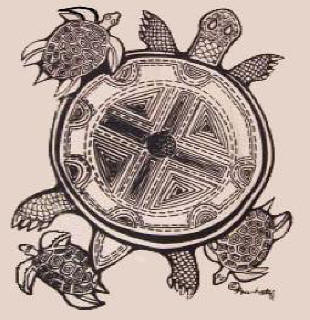 |
LITR 4326
Early American Literature Research Posts 2016 (research post assignment) Research Post 2 |
 |
Austin Green
4/5/16
I’ve Heard Some Things
Before I began this second research post, I read the novel that I will be
looking into: Wieland, by Charles Brockden Brown. After learning more about his
life in my previous research post, I was excited to read something by the
author, and starting with arguably his most famous work seemed like a great
kicking-off point. I did really enjoy the book, and was glad I didn’t know much
about it beforehand. Once finished, I did have some questions that I hope to
find the answers to while doing research for this assignment. What is the novel's
place in American Literature’s history today? And are any contemporary writers
influenced by Charles Brockden Brown?
My first source was Lauren Weatherly’s paper titled The American Gothic
(1). I wanted to begin with reading a former classmate’s research into a topic
that my own falls into. Right away I could tell we had a similar history with
why we picked these areas to write about: a love for the more well-known gothic
writers, and wanting to know more about where the genre originated from. She was
looking more into who influenced writers of early American gothic, while I’m
looking for who was influenced by my early American gothic writer, Charles
Brockden Brown. This paper confirmed the information I originally read on
Wikipedia when submitting proposal ideas. Wieland is considered the first
American gothic novel. She lists both Edgar Allan Poe and Nathaniel Hawthorne,
among others, as two of the writers that also influenced the American gothic
genre. No word here on if they were influenced by Charles Brockden Brown,
however.
My next source was the Gothic term page from our own course site (2). We
are presented information on the different aspects or elements associated with
genre literature. Some of these I noticed in Wieland were “haunted” houses,
repressed fears, and woods. The definition of “The Gothic Novel” included here (A
form of novel in which magic, mystery, and chivalry are the chief
characteristics) can be seen in Wieland. The section most fitting for
information I was looking for was also the most disappointing. Near the bottom
of the website is an exam essay answer about gothic literature. Again, both Poe
and Hawthorne were mentioned, but sadly no mention of Brown. It’s time to look
up some Weiland-specific articles to hopefully find the answers I’m searching
for.
A few internet searches later I located my third source, an article
written for The Guardian about Wieland from 2010 (3). Right under the headline
they described the novel as “a
212-year-old novel that provided a map for US fiction.” This seemed to be
exactly what I was looking for, and luckily it was. While it did not back the
claim up with much support, we are told that this novel was a direct influence
on one of the most famous books of all time, Mary Shelley’s Frankenstein. It
also counters the notion that Wieland was the first novel written by an American-born writer, claiming a book published years before in 1789 by William Hill
Brown held that distinction. It also asserts that Wieland’s legacy “casually
installs a crazed backwoods farmer as the true progenitor of 200-odd years of US
fiction.” I can’t say that didn’t get a chuckle out of me. The end of the
article does mention Brown's influence on writers that came after him, and
touches on major topic’s we have covered in class: “Brown's melodrama provided a
map for the fiction that followed, pinpointing New World tensions and terrors at
a time when the republic was still freshly formed, stitched lightly on to the
great American wilderness. It sets Pleyel up as the mouthpiece for the age of
reason and Wieland as the embodiment of religious fervour.”
My final source was a 2011 article on Wieland from the Paste Magazine
website (4). We are given a brief introduction to Charles Brockden Brown and how
he had a unique viewpoint due to the time he was alive. This time he’s referred
to as the father of American Gothic fiction, and given credit for taking the
elements of European gothic and changing them enough to relate to the new
America. This seems like something so obvious to write when mentioning him, I
was surprised I hadn’t seen his work described this way before. It also
mentioned a list of writers influenced by Brown including Herman Melville, Hawthorne,
Poe (them again!), and James Fenimore Cooper. What started out as almost a checklist
of what I had been searching for then turned into a summary of the novel, and
then information on Brown’s political views. While interesting, this was not the
information I was searching for.
Ultimately I was able to find some information on the questions I was
searching for. While I was able to answer both questions raised at the start, I
feel the answers I found were very surface level. I tried looking for better or
richer sources, but mostly I found the same surface level information provided
over and over. His novels are considered some of the earliest, if not the first,
American literature we have (be it horror, gothic, or otherwise). It’s a safe
bet to say Brown influenced more famous writers, like (again) Poe and Hawthorne.
But then I also think it’s a safe bet to say those authors in turn influenced
other writers (Lovecraft, Matheson) and so on until we get to contemporary
writers, like a Stephen King or a Robert McCammon. I ended up really enjoying
reading Wieland, and doing this research made me appreciate it even more. I’m
looking forward to reading Edgar Huntly.
Bibliography
1.
http://coursesite.uhcl.edu/HSH/Whitec/LITR/4231/models/rp/rp2012/rp1/rp1Weatherly.html
2.
http://coursesite.uhcl.edu/HSH/Whitec/terms/G/gothic.htm
3.
http://www.theguardian.com/books/2010/oct/02/wieland-transformation-brockden-brown-review
4.
http://www.pastemagazine.com/articles/2011/09/wieland-or-the-transformation-an-american-tale-by.html
|
|
|
|


